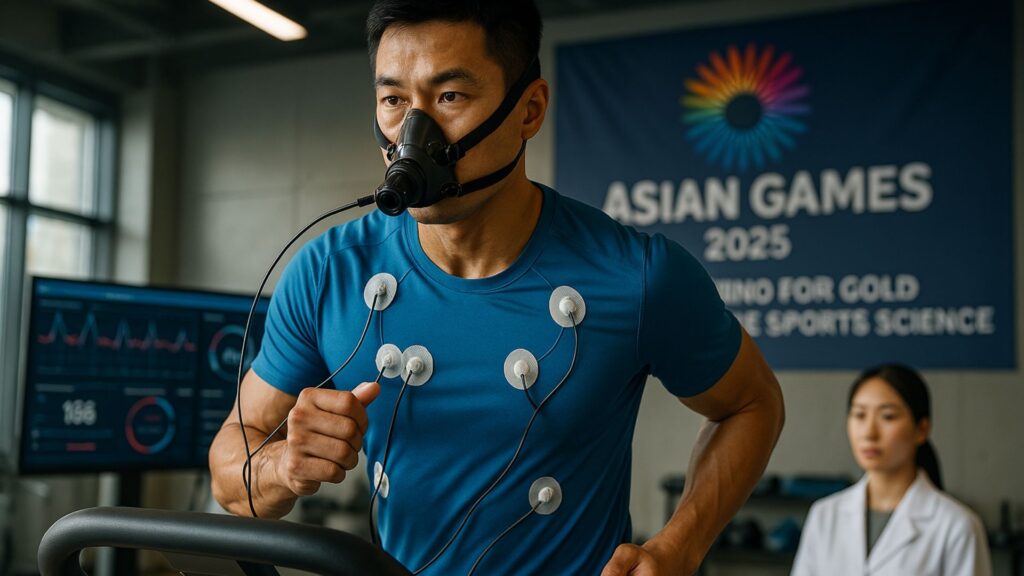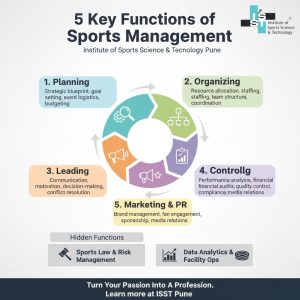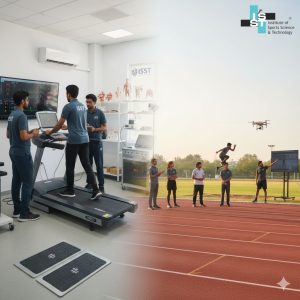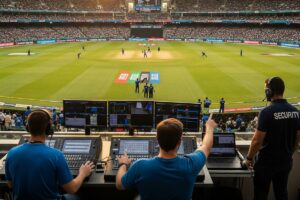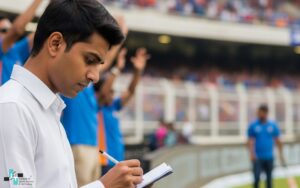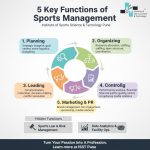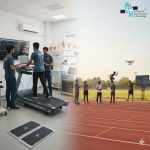I. Introduction: The Quest for Gold in Asia’s Premier Sporting Arena
The Asian Games stand as a monumental celebration of athletic prowess, continental unity, and cultural exchange, second in global prominence only to the Olympic Games. More than just a multi-sport competition, the Games serve as a vibrant platform reflecting Asia’s dynamic ascent on the world stage, embodying regional identity, cooperation, and growing geopolitical and economic influence. The sheer scale of the event underscores its significance; the recent 19th Asian Games, hosted in Hangzhou, China in 2023 after a year’s postponement due to the COVID-19 pandemic , brought together a staggering 11,909 athletes from 45 nations competing across 481 events in 40 diverse sports. This continental spectacle, originating from a post-World War II vision to rebuild bonds and foster peace through sport , has evolved into a high-stakes arena where national prestige is fiercely contested.
In this intensely competitive environment, securing a place on the podium, let alone capturing gold, demands more than innate talent and dedication. The margins between victory and defeat are razor-thin, compelling nations and athletes to seek every possible advantage. This relentless pursuit of excellence has propelled cutting-edge training regimens and sophisticated sports science applications to the forefront of athletic preparation. Success is increasingly engineered through meticulous planning, scientific intervention, and technological innovation.
This report delves into the advanced methodologies shaping champions at the Asian Games. It explores the global blueprint of elite training, examines the specific applications of sports science disciplines, investigates the role of technology, and highlights how Asian nations are uniquely blending modern science with traditional practices. Through specific examples and success stories, particularly from the recent Hangzhou Games, we uncover the scientific strategies and innovative approaches that underpin the quest for gold in Asia’s premier sporting arena. The vast scale and diversity of the Games, encompassing everything from Olympic staples like athletics and swimming to unique regional sports such as Kabaddi and Sepak Takraw, and even modern disciplines like Esports , present an immense challenge for sports science support systems. This necessitates highly adaptable and sophisticated national strategies capable of addressing vastly different athletic demands across 61 distinct disciplines.
II. The Asian Games Arena: Where Tradition Meets Peak Performance
Understanding the context of the Asian Games is crucial to appreciating the training and scientific efforts involved. The Games have a rich history, officially inaugurated in New Delhi, India, in 1951, following the vision of India’s first Prime Minister, Jawaharlal Nehru, to foster unity in post-war Asia. This event evolved from earlier regional competitions like the Far Eastern Championship Games, which began in 1913. From its modest start with 11 nations and 489 athletes , the Asiad has grown exponentially, organized under the Olympic Council of Asia (OCA) and now including participation from Oceania nations since 2022.
Historically, the competitive landscape has been dominated by East Asian powerhouses. China, Japan, and South Korea consistently top the medal tables, having amassed thousands of medals over the Games’ history. China, in particular, has asserted its dominance since first participating in 1974, frequently securing the top position. India also holds a significant place in Asian Games history, having participated in every edition, hosting the first Games, and ranking as the fifth-most successful nation overall in terms of medal count.
The most recent edition, the 19th Asian Games in Hangzhou (2023), provides a current snapshot of this competitive dynamic.
Table 1: Overall Medal Table – Hangzhou 2022 Asian Games (Top 10)
| Rank | Nation | Gold | Silver | Bronze | Total |
|---|---|---|---|---|---|
| 1 | China* | 201 | 111 | 71 | 383 |
| 2 | Japan | 52 | 67 | 69 | 188 |
| 3 | South Korea | 42 | 59 | 89 | 190 |
| 4 | India | 28 | 38 | 41 | 107 |
| 5 | Uzbekistan | 22 | 18 | 31 | 71 |
| 6 | Chinese Taipei | 19 | 20 | 28 | 67 |
| 7 | Iran | 13 | 21 | 20 | 54 |
| 8 | Thailand | 12 | 14 | 32 | 58 |
| 9 | Bahrain | 12 | 3 | 5 | 20 |
| 10 | North Korea | 11 | 18 | 10 | 39 |
*Host Nation (Data Source: )
This table clearly shows the continued dominance of China, Japan, and South Korea. However, it also highlights India’s record-breaking performance, achieving its highest-ever medal tally. Athletics and Swimming are mandatory core sports , often serving as benchmarks of national sporting capacity. Examining the Athletics results from Hangzhou reveals further nuances.
Table 2: Athletics Medal Table – Hangzhou 2022 Asian Games (Top 5)
| Rank | Nation | Gold | Silver | Bronze | Total |
|---|---|---|---|---|---|
| 1 | China* | 19 | 11 | 9 | 39 |
| 2 | Bahrain | 10 | 1 | 5 | 16 |
| 3 | India | 6 | 14 | 9 | 29 |
| 4 | Qatar | 3 | 3 | 0 | 6 |
| 5 | Japan | 2 | 7 | 8 | 17 |
*Host Nation (Data Source: )
While China leads, Bahrain’s strong showing in Athletics (2nd here vs. 9th overall) and India’s significant contribution from the track and field (3rd here vs. 4th overall) are notable. Athletics accounts for the largest share of India’s total Asian Games medals historically. This demonstrates that while the overall dominance of the “Big Three” is clear , targeted investment and specialization in specific sports allow other nations to achieve significant success and challenge for gold medals. India’s historical dominance in Kabaddi, winning eight of nine editions since its debut , further exemplifies how focusing resources can yield exceptional results outside the traditional power structure.
The diverse program, featuring unique Asian sports like Kabaddi, Sepak Takraw , and Wushu alongside Olympic disciplines and newer additions like Esports , creates a unique environment. It necessitates a broad approach to sports science, potentially requiring the integration of traditional training knowledge, particularly prevalent in indigenous martial arts and sports , with modern, evidence-based methodologies. This blend presents both challenges and distinct opportunities for Asian nations in optimizing athlete preparation.
III. The Global Blueprint: Cutting-Edge Training for Elite Athletes
Achieving peak performance on the demanding stage of the Asian Games requires leveraging sophisticated training methodologies honed in elite sports worldwide. These strategies provide a foundation upon which specific national and individual adaptations are built.
Periodization: The Foundation of Planning At the heart of structured training lies periodization – the systematic division of a training plan into distinct phases or cycles (macrocycles, mesocycles, microcycles), each with specific objectives regarding training variables like intensity, volume, frequency, and rest. Originating from early training theories dating back to ancient Greece and Rome , modern periodization is grounded in physiological principles like Hans Selye’s General Adaptation Syndrome, the concept of supercompensation (where recovery allows performance to rebound beyond baseline levels), and the Fitness-Fatigue model, which posits that training induces both fitness gains and fatigue simultaneously.
While simple linear periodization (gradually increasing intensity while decreasing volume) might suffice for novices , elite athletes facing complex international schedules and diverse sporting demands often require more advanced models. These include:
- Undulating (Non-Linear) Periodization: This involves more frequent, often weekly or daily, variations in training intensity and volume. This flexibility helps athletes adapt to changing demands, manage fatigue, and maintain a high level of readiness, particularly beneficial for those with irregular competition schedules.
- Block Periodization: This model concentrates training load into specific blocks, each focusing intensely on a particular physiological capacity (e.g., strength, power, endurance) for several weeks. This allows for highly focused development and can be effective for sports requiring specialization or for athletes needing to peak multiple times within a year.
- Conjugate Periodization: This advanced approach involves training multiple fitness qualities concurrently within the same training cycle, but with different levels of emphasis. For example, an athlete might prioritize strength development while maintaining speed and endurance. This is particularly useful for sports demanding a blend of diverse physical abilities. The increasing sophistication of these models reflects the need for highly individualized and adaptable training plans. The complex demands of multi-sport events like the Asian Games, coupled with long competitive seasons, necessitate strategies that can precisely manage training stress, recovery, and peaking for optimal performance when it matters most.
Strength & Conditioning (S&C) Innovations Modern S&C has evolved far beyond traditional weightlifting, incorporating innovative techniques to enhance power, stability, and resilience. Elite programs often utilize:
- Low-Level Plyometrics: Regular inclusion of hops and skips helps prepare joints, muscles, and tendons for more intense movements and can aid in injury prevention for the lower limbs.
- Overcoming Isometrics: Attempting to move an immovable object allows for maximal force production with relatively low fatigue, using protocols like a 3-second build-up and 3-second maximal hold.
- Dynamic Effort Lifting: Lifting submaximal weights (specific percentages of 1RM) with maximal concentric velocity is highly beneficial for power development and potentially athlete longevity.
- Core Stability Focus: Developing a strong, stable trunk or “platform” is crucial for efficient transfer of force between the upper and lower body, enhancing overall movement effectiveness and reducing the risk of lower back and pelvic injuries. Furthermore, S&C programs must be adapted for the growing number of elite athletes with extended careers, balancing age-related changes with accumulated expertise through specific strength adaptations, careful load monitoring, and avoiding large training load peaks or inactivity. S&C also plays a vital role in post-injury rehabilitation, helping athletes return to competition safely and effectively.
Recovery: The Unsung Hero Often overlooked, recovery is an indispensable component of elite training, allowing the body to adapt and rebuild stronger. Strategic recovery is crucial for avoiding burnout and maximizing long-term gains. Key techniques include:
- Fundamental Practices: Adequate rest and particularly sleep are paramount for muscle repair, hormone regulation, immune function, and mood. Proper nutrition and hydration provide the building blocks for recovery.
- Active Recovery: Light activities like swimming or walking post-exercise can promote blood flow and potentially aid lactate clearance, though evidence for direct performance benefits is mixed.
- Hydrotherapy: Techniques like cold water immersion (CWI) and contrast water therapy (CWT) are widely used, influencing blood flow, body temperature, inflammation, and the perception of fatigue. Cold plunging may help reduce post-workout lactic acid.
- Compression Garments: These improve circulation, enhance oxygen delivery to muscles, and can reduce muscle fatigue and soreness.
- Manual Therapies: Massage and techniques like Tui Na (Chinese therapeutic bodywork) help release muscle tension and improve mobility.
- Stretching: Dynamic stretching pre-activity is beneficial for warming up and improving performance, while static stretching post-activity may help with soreness and psychological well-being, though its direct impact on performance recovery is less clear.
- Advanced Modalities: Newer techniques gaining traction include whole-body cryotherapy (brief exposure to extreme cold) , photobiomodulation (red and near-infrared light therapy) targeting cellular energy production , and saltwater float tanks (Restricted Environmental Stimulation Technique or REST) promoting deep relaxation and mental focus. The wide array of recovery methods employed highlights a holistic approach in elite sport. Marginal gains are pursued not just through physiological repair but also through psychological restoration, targeting the nervous system, hormonal balance, and mental well-being to optimize the entire athlete system.
Load Management: Balancing Stress and Adaptation Connecting the training stimulus with effective recovery and adaptation requires careful load management. This involves monitoring both the external load (the physical work completed, e.g., distance run, weight lifted, session duration/frequency) and the internal load (the individual athlete’s physiological and psychological response to that work). Common tools for monitoring internal load include heart rate (HR), ratings of perceived exertion (RPE), session RPE (RPE x duration), and blood lactate levels. Objective external load measures often involve GPS tracking, accelerometry, and power meters.
A key metric in modern load management is the Acute:Chronic Workload Ratio (ACWR). This compares the training load accumulated in the most recent week (acute load) to the average weekly load over the previous four weeks (chronic load). Research suggests maintaining an ACWR between 0.8 and 1.3 represents a “sweet spot” for positive adaptation while minimizing injury risk. Spikes in training load, often indicated by an ACWR above 1.5, are associated with significantly increased injury likelihood. This quantifiable approach helps coaches and sports scientists make informed decisions about training progression, ensuring athletes are stressed enough to adapt but not so much that they break down. Effective load management is thus the crucial link ensuring that rigorous training translates into sustainable performance improvements rather than overtraining or injury.
IV. The Science Behind the Speed, Strength, and Stamina
Underpinning the sophisticated training regimens are core sports science disciplines that provide the knowledge and tools to analyze, monitor, and optimize every facet of athletic performance.
Biomechanics: The Science of Movement Biomechanics applies the principles of physics to study human movement, analyzing the forces acting on the body (kinetics) and the properties of the movement itself (kinematics, e.g., velocity, acceleration). In sport, its application is crucial for optimizing technique, enhancing movement efficiency, reducing the risk of injury, and even improving equipment design.
Biomechanists use tools ranging from simple visual assessment to advanced motion capture systems (often involving multiple high-speed cameras) and force plates to quantify movement patterns. This analysis can identify inefficient movements that waste energy or increase injury potential. For example, analyzing a pitcher’s kinematic sequence can reveal flaws preventing maximal velocity , while assessing a basketball player’s landing mechanics can identify risks for knee injuries like ACL tears. Specific examples include optimizing techniques in tennis , swimming , running , javelin throwing , sepak takraw , and taekwondo. Biomechanics also informs the development of better footwear, apparel, and protective gear.
Studies comparing athletes at regional competitions like the South East Asian (SEA) Games with world-class performers often reveal quantifiable biomechanical differences. For instance, analyses of hammer throwers and javelin throwers at the SEA Games showed significantly lower release velocities compared to world championship finalists. Such findings provide concrete, objective targets for coaches to address specific technical deficiencies and close the performance gap through targeted interventions.
Exercise Physiology: Understanding the Body’s Response Exercise physiology focuses on how the body functions during and adapts to physical activity and training stress. It examines energy systems, cardiovascular and respiratory responses, neuromuscular function, and hormonal changes. Physiologists play a key role in monitoring how athletes respond to training loads, assessing fitness components like aerobic capacity (VO2max) , and understanding the mechanisms of fatigue.
A critical application is the monitoring of internal training load. Tracking metrics like heart rate, RPE, and sometimes blood lactate provides insight into the physiological stress experienced by the athlete in response to the external work performed. This is vital because the same external workload (e.g., running 10km at a certain pace) can impose vastly different internal loads depending on the athlete’s fitness level, fatigue state, environmental conditions, hydration, and other factors. Examining the relationship between HR and RPE at submaximal intensities can even help detect accumulating fatigue. By understanding the individual physiological response, training programs can be personalized to optimize adaptation and prevent overtraining or under-stimulation.
Sports Nutrition: Fueling Performance and Recovery Nutrition is fundamental to athletic success, providing the energy required for training and competition, the materials for muscle repair and adaptation, and supporting overall health and body composition optimization. General guidelines for athletes suggest a diet rich in unrefined carbohydrates (like wholegrain breads and cereals), adequate protein, and healthy fats. Macronutrient distribution typically emphasizes carbohydrates (45-65%), followed by protein (15-25%) and fat (20-35%) , although specific needs vary by sport and training phase.
Carbohydrate intake needs careful management based on training load, ranging from 3-5 g/kg/day for light activity up to 8-12 g/kg/day for extreme endurance exercise. Protein requirements are also elevated for athletes, generally falling between 1.2-2.0 g/kg/day depending on the sport’s demands (endurance vs. strength). Hydration is critical, with athletes needing significantly more fluid than the general recommendation of 64 oz (approx. 2 quarts) per day, especially in warm conditions. Monitoring urine color and tracking weight loss during exercise helps ensure adequate hydration.
Nutrient timing is also key. A high-carbohydrate meal 3-4 hours before competition helps maximize glycogen stores, while a smaller carb-rich snack within 1-2 hours (or even 30 minutes) before the event can top up energy levels. During prolonged exercise (>1 hour), consuming 30-60 grams of carbohydrates per hour helps delay fatigue. Post-exercise nutrition focuses on replenishing glycogen and providing protein for muscle repair. Athletes are generally advised to avoid foods high in fat, lactose, or fiber close to competition, as these can cause digestive issues or sluggishness.
Sports Psychology: Mastering the Mental Game The psychological dimension of sport is increasingly recognized as critical for achieving peak performance, especially under the intense pressure of major competitions like the Asian Games. Sports psychology focuses on developing mental skills that enable athletes to perform consistently at their best, manage emotions effectively, and maintain motivation and resilience.
Rather than just addressing problems like performance anxiety, modern sports psychology proactively builds mental skills as trainable components of performance, much like physical conditioning. Key techniques include:
- Goal Setting: Establishing specific, measurable, achievable, relevant, and time-bound (SMART) goals for both practice and competition, focusing on process and performance rather than solely outcomes.
- Visualization and Mental Rehearsal: Mentally simulating successful performances and navigating potential challenges helps build confidence, familiarity, and readiness while reducing anxiety.
- Concentration and Focus Training: Developing strategies (e.g., routines, keywords, mindfulness) to maintain focus, manage distractions, and refocus when attention wanders.
- Stress Management and Arousal Control: Learning cognitive techniques (e.g., thought stopping, reframing) and somatic techniques (e.g., relaxation, breathing exercises) to manage pressure and optimize activation levels.
- Confidence Building: Utilizing positive self-talk, focusing on strengths, and drawing on past successes to foster robust self-belief.
- Mental Toughness Development: Cultivating resilience, perseverance, and emotional control to perform effectively despite adversity. These mental skills are crucial for navigating the inevitable challenges of elite sport and unlocking an athlete’s full potential.
V. The Technological Edge: Data-Driven Performance in Asia
The landscape of elite sports preparation is being rapidly transformed by technology, particularly the synergy between wearable sensors and advanced data analytics. This technological wave is providing unprecedented insights into athlete performance, physiology, and injury risk.
The Wearable Revolution and Data Analytics Athletes today are often equipped with an array of wearable devices – GPS trackers, heart rate monitors, accelerometers, gyroscopes, sleep trackers, muscle oxygen sensors, and even smart apparel with integrated sensors. The average professional athlete now interacts with around 8 distinct wearable technologies during a typical training week, a significant increase from just a few years ago. These devices generate vast streams of real-time, continuous data on movement, physiological responses, and recovery patterns.
However, raw data alone is insufficient. The true power lies in sophisticated data analytics, often employing artificial intelligence (AI) and machine learning (ML) algorithms, to process this information and extract actionable insights. This analytical layer transforms descriptive data (what happened) into predictive intelligence (what might happen) and prescriptive guidance (what to do about it). Key applications include:
- Performance Optimization: Building detailed athlete profiles, analyzing biomechanical efficiency during key actions (e.g., swing speed, launch angles), quantifying physiological adaptations to training, tracking skill acquisition rates, and optimizing training load with greater precision. Teams leveraging these insights report significant improvements in athlete availability (18% increase) and targeted training adaptations (23% improvement).
- Injury Prevention: Advanced algorithms analyzing integrated data streams (sleep quality, heart rate variability (HRV), biomechanical asymmetries, workload patterns, recovery markers) can now identify potential injury risks with remarkable accuracy – reportedly up to 76% accuracy two weeks before clinical symptoms manifest. Teams implementing comprehensive monitoring have documented substantial reductions (32%) in non-contact injuries.
- Real-Time Decision Making: Significant improvements in data transmission speed (240% faster since 2021) enable coaches and support staff to receive and interpret data much faster, allowing for timely interventions during training sessions or even competitions.
Specific Technologies and Asian Adoption Examples of impactful technologies include Intel’s 3DAT system using AI for advanced track and field visualizations , Omega Timing’s sensor-based systems , STATSports’ GPS vests popular in team sports , WHOOP bands for 24/7 recovery and strain monitoring , and Kinexon’s ultra-wideband sensors for precise indoor tracking. Innovations extend to materials science, with smart fabrics offering enhanced compression, thermal regulation (using graphene or phase-change materials), antimicrobial properties, and UV protection , as well as 3D printing enabling customized footwear and protective gear.
While often associated with Western leagues, the adoption of sports technology is rapidly growing across Asia. Significant partnerships illustrate this trend: Huami (makers of Amazfit wearables) established a formal, multi-year partnership with the Chinese Athletics Association, covering major events like the Asian Games and Olympics, including plans for a joint laboratory focused on analyzing athlete data. Performance tracking company Kinexon partnered with Japan’s Sporta to bring its widely used wearable devices to Japanese teams, starting with the Alvark Tokyo basketball team. This reflects a recognition by Asian sporting bodies that embracing technology is essential for competing at a world-class level.
Furthermore, national sports agencies are strategically incorporating technology. The Japan Sports Agency is revising its athlete development strategy to explicitly include AI, aiming to catch up with global leaders in this field. An Olympic Council of Asia (OCA) seminar specifically highlighted AI’s impact on sports, referencing technological successes at the Hangzhou Asian Games. Technology is also being integrated into regionally popular sports like cricket (Hawk-Eye, wearables), badminton (smart rackets, AI coaching), and even traditional martial arts like Arnis (VR training).
The sheer volume of data generated by multiple devices necessitates specialized expertise. The fact that nearly four out of five professional sports organizations now employ dedicated data analysis staff focused on wearable tech outputs highlights a crucial shift. Translating complex data streams into meaningful, actionable intelligence requires sophisticated analytical tools (AI/ML) and skilled personnel, representing both a significant opportunity and a potential challenge for sports organizations globally, including those in Asia.
VI. Asian Innovations: Tailoring Training for Regional Success
While global best practices provide a foundation, Asian nations are increasingly developing their own sophisticated approaches to elite sport, driven by national ambitions, significant investment, and a unique cultural context that sometimes blends tradition with modernity.
National Strategies and Investment The approaches vary significantly across the continent, reflecting diverse political systems and priorities:
- China: Operates a highly centralized, state-funded system (often referred to as Juguo Tizhi or “whole-nation system”) with a strong historical emphasis on elite sport success for national prestige and soft power. Massive investments are made in infrastructure for hosting mega-events like the Beijing Olympics and Hangzhou Asian Games (over $30 billion reported for Hangzhou infrastructure and related facilities). The General Administration of Sport of China (GASC) guides strategy , aiming to make China a leading global sports power by 2035/2050. There’s a strong push towards digitalization, smart technologies, and partnerships (e.g., Huami for wearables , Singapore for investment ), alongside efforts to tackle issues like sports corruption.
- Japan: Employs a structured approach led by the Japan Sport Council (JSC), which integrates the Japan Institute of Sports Sciences (JISS) and the National Training Center (NTC). This system provides comprehensive support based on sports medicine, science, research, and information technology. Japan is strategically investing in AI and digital technology to enhance athlete performance and analysis. JISS offers specialized support, including psychological services , and dedicated support bases are established for major international competitions like the Olympics and Asian Games.
- South Korea: Has a strong track record in elite sport, consistently ranking among the top nations at the Asian Games and having hosted multiple major international events. The Korea Institute of Sport Science (KISS, also known as KISPO) spearheads scientific training initiatives , supported by national training centers like Taereung and Jincheon. Universities, such as the Korea National Sport University (KNSU), play a significant role, with their graduates contributing substantially to national medal tallies at past Asian Games. However, recent public criticism from a top athlete regarding support systems suggests potential challenges beneath the surface.
- India: Has significantly increased its focus and investment in sports in recent years. Government initiatives like the Khelo India program aim to build grassroots infrastructure (over 300 projects) and scout talent , while the Target Olympic Podium Scheme (TOPS) provides dedicated funding for elite athletes’ training, equipment, foreign coaching, international exposure, and specialized support staff (physiotherapists, psychologists). India’s record medal haul at the Hangzhou Asian Games (107 medals) is seen partly as validation of these programs. There are ambitious plans to establish specialized Olympic Training Centres across the country to further boost elite performance ahead of a potential 2036 Olympic bid. The Athletics Federation of India (AFI) and the Sports Authority of India (SAI) are key governing bodies.
This diversity in national strategies shows there is no single “Asian model.” Each nation leverages its unique context – political structure, economic capacity, cultural background, and existing sporting strengths – to pursue success on the international stage.
The Unique Blend: Tradition Meets Modernity A distinctive feature emerging in Asian sports science is the potential integration of traditional practices with modern methodologies:
- Traditional Chinese Medicine (TCM): Increasingly utilized alongside conventional sports medicine for recovery and potentially performance enhancement. Techniques like acupuncture are recognized for pain relief, reducing inflammation, and improving circulation. Cupping therapy gained visibility through its use by athletes like Michael Phelps and is employed for muscle tension relief and blood flow enhancement. Other methods include herbal medicine (though caution regarding contamination and evidence quality is needed ), Tui Na massage , Guasha (scraping) , and mind-body practices like Qigong and Tai Chi, which may aid injury prevention through improved balance, flexibility, and body awareness. While promising, rigorous scientific validation is still required for some TCM modalities to fully understand their efficacy and mechanisms in athletic populations.
- Traditional Martial Arts Principles: Concepts and training methods from Asia’s rich martial arts heritage – encompassing disciplines like Kung Fu/Wushu (China) , Kalaripayattu and Adimurai/Varma Kalai (India) , Pencak Silat (Indonesia/Malaysia) , Taekwondo (Korea) , Judo/Karate/Aikido (Japan) , Arnis (Philippines) , and Muay Thai (Thailand) – offer potential avenues for unique conditioning, mental discipline, and movement training. These traditions emphasize discipline, focus, respect, perseverance, and body control. Modern combat sports like MMA explicitly integrate techniques from various traditional arts , demonstrating the continued relevance of these skills. The holistic approach often found in these traditions, sometimes incorporating elements of traditional medicine or philosophy , could complement purely physiological training approaches.
This potential fusion of ancient wisdom and modern science represents a unique cultural asset for Asian nations. If integrated thoughtfully and rigorously evaluated, it could offer holistic pathways to athlete development and well-being that differ from purely Western models. However, balancing tradition with scientific scrutiny remains crucial.
Furthermore, the high-profile criticisms voiced by athletes like South Korean badminton star An Se-young , despite her immense success and the country’s established sports science infrastructure , serve as a critical reminder. They suggest that even well-funded systems can suffer from disconnects between institutional structures and the athlete’s lived experience. Issues around communication, individualized care, responsiveness to injury, and the adoption of truly cutting-edge, science-based coaching methods can persist even within successful programs. This highlights that effective implementation, athlete welfare, and continuous professional development for coaches are just as important as infrastructure and funding for achieving sustainable success.
VII. Training for Gold: Success Stories from the Asian Games
Moving from principles to practice, examining specific athlete journeys illuminates how cutting-edge training and sports science translate into medal-winning performances at the Asian Games. The Hangzhou 2022 Games provide compelling recent examples.
Case Study 1: Neeraj Chopra (India, Javelin Throw) Neeraj Chopra stands as a paragon of consistency and excellence in Indian athletics. His achievements include Olympic gold (Tokyo 2020), World Championship gold (Budapest 2023), a Diamond League title, and crucially for this context, consecutive Asian Games gold medals in Jakarta 2018 and Hangzhou 2022. In Hangzhou, he secured gold with a formidable throw of 88.88 meters.
Chopra’s success is built on a foundation of meticulous preparation. His training regimen is described as rigorous, blending traditional and modern methods, often conducted in overseas training camps (like Turkey) under the guidance of renowned German coach and biomechanics expert Klaus Bartonietz. This focus on technique, strength, and agility is supported by India’s Target Olympic Podium Scheme (TOPS), which provides funding for elite athletes. Chopra and his team carefully manage his training load and competition schedule, particularly when dealing with niggles like the adductor issue that affected his 2023-2024 seasons. His coach emphasizes planned preparation over excessive competing to avoid burnout and injury risk. Chopra’s mental strength was also evident in Hangzhou when he overcame significant disruption after officials failed to measure his first throw, requiring him to retake it after a lengthy delay. His journey exemplifies how structured support, world-class coaching focusing on scientific principles like biomechanics, careful planning, and mental resilience combine to produce consistent global success, including dominance at the Asian Games level.
Case Study 2: Zhang Yufei (China, Swimming) Chinese swimmer Zhang Yufei delivered a commanding performance at her home Asian Games in Hangzhou. A highly decorated athlete with numerous international medals , she emerged as the standout female star of the Games, securing an incredible six gold medals (50m Freestyle, 50m, 100m, 200m Butterfly, 4x100m Freestyle Relay, Mixed 4x100m Medley Relay). This feat tied the record for swimming golds at a single Asian Games set by Japan’s Ikee Rikako in 2018, and earned Zhang the women’s MVP award for Hangzhou 2022. She achieved this dominance despite battling illness during the competition, showcasing remarkable resilience.
Zhang’s performance reflects the strength of China’s centralized swimming program. Coached by Cui Dengrong , her technical proficiency, particularly in butterfly events where she holds Asian records , is evident. While specific details of her sports science support are not provided in the snippets, her ability to perform at such a high level across multiple events, set Games records (50m Fly: 25.10s, 50m Free: 24.26s) , and compete effectively while unwell points to sophisticated conditioning, technical coaching, and strong mental fortitude, likely cultivated within China’s elite sport system.
Case Study 3: An Se-young (South Korea, Badminton) An Se-young has rapidly ascended to the pinnacle of women’s badminton, achieving World No. 1 ranking, becoming the first Korean woman to win the World Championships (2023), and capturing gold at both the Hangzhou 2022 Asian Games and the Paris 2024 Olympics. Known for her incredible court coverage and agility , she was identified as a prodigious talent early, joining the national team while still in junior high school.
However, An’s journey is also notable for her outspoken criticism of the Badminton Korea Association (BKA) and the national team’s support system. Despite her success, she has alleged poor management of her injuries (including a significant knee injury), lack of access to her personal trainer during crucial periods, outdated and non-scientific training methods compared to rivals like China, and poor communication from coaches and officials. Her case, which prompted a government investigation , highlights that exceptional individual talent and determination can lead to success even amidst perceived systemic shortcomings. It underscores the critical need for athlete-centered, science-driven support structures that prioritize communication, individualized care, and modern coaching practices, even within traditionally successful national programs.
Case Study 4: Qin Haiyang (China, Swimming) Qin Haiyang established himself as the world’s dominant male breaststroker in 2023, sweeping the 50m, 100m, and 200m titles at the World Championships. He carried this form into the Hangzhou Asian Games, winning five gold medals. However, his subsequent performance at the Paris 2024 Olympics was disappointing.
Qin’s response demonstrates adaptability and a reliance on expert guidance. He acknowledged that an overemphasis on physical/strength training in the lead-up to Paris had negatively impacted his water feel and performance. Post-Olympics, he shifted his focus back to water training and began working with renowned Australian coach Michael Bohl. Bohl’s “keep it simple” mantra helped Qin manage pressure and refocus on process. Technical analysis reveals Qin possesses highly efficient stroke mechanics, including a distinctive pull pattern and excellent body line. His comeback performances in early 2025, approaching his 2023 peak times , suggest the adjustments are working. Qin’s story illustrates the importance of responsive training strategies, the value of international coaching expertise in refining technique and managing psychology, and the continuous process of adaptation required at the elite level.
These individual stories, alongside India’s collective success in Hangzhou attributed partly to the TOPS and Khelo India initiatives , demonstrate a common thread: achieving gold at the Asian Games requires navigating significant challenges. Whether it’s institutional friction, mid-competition adversity, or performance setbacks requiring strategic recalibration, mental resilience appears just as crucial as physical preparation. Furthermore, access to international-level coaching and exposure seems increasingly vital for athletes aiming for the top step of the podium, suggesting that global integration and knowledge exchange significantly benefit national sports systems.
VIII. Conclusion: The Future of Performance at the Asian Games
The pursuit of glory at the Asian Games has evolved into a sophisticated endeavor where athletic success is increasingly forged at the intersection of dedicated training, scientific innovation, and technological integration. As the competitiveness of the Games continues to rise, nations across Asia recognize that relying solely on raw talent is no longer a viable strategy. The path to the podium is paved with meticulous planning, data-driven insights, and the relentless optimization of human potential.
The foundations of modern elite training – structured periodization, advanced strength and conditioning, holistic recovery protocols, and targeted interventions based on biomechanics, exercise physiology, sports nutrition, and psychology – form the global blueprint adopted by leading Asian sporting nations. However, the Asian context adds unique dimensions. Significant state and private investment is flowing into sports infrastructure, talent development, and scientific support systems across the continent. Nations are actively adopting and integrating cutting-edge technologies, from wearables and AI-driven analytics to advanced materials science, recognizing their importance for global competitiveness. Furthermore, there is a growing exploration of how traditional knowledge systems, such as TCM and martial arts principles, can be synergistically blended with modern science to offer unique, culturally resonant approaches to training and recovery.
This confluence of investment, global best practices, technological adoption, and unique cultural integration signals an escalating “arms race” in performance optimization across Asia. Future iterations of the Asian Games, such as the upcoming Aichi-Nagoya 2026 Games , are likely to be even more scientifically driven. The future points towards greater personalization, with training and recovery tailored precisely to individual athlete data. Predictive analytics will become more sophisticated, moving beyond injury risk identification to proactively guide interventions. AI is poised to offer deeper coaching insights and potentially automate aspects of performance analysis.
However, realizing this potential requires more than just resources and technology. As highlighted by challenges faced even within successful programs, bridging the gap between institutional structures, scientific research, and effective, athlete-centered implementation on the ground is critical. Ensuring high-quality coaching, fostering open communication, prioritizing athlete well-being, and creating systems that are responsive to athlete feedback will be crucial differentiators. The nations that successfully navigate this complex integration – mastering not only the science and technology but also the art of human development and management – will likely be the ones consistently reaching for gold at the Asian Games in the years to come.Sources used in the report

